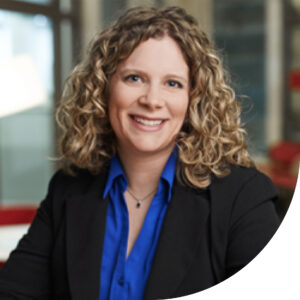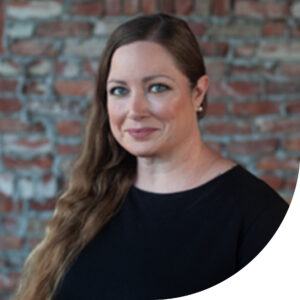Melissa DeStout | Associate Principal | Pittsburgh

I’m an architect in the senior living practice area and have been at Perkins Eastman for 11 years. I interned at PE for two summers and after graduating and working for a few years, I jumped at the opportunity to come back because of how much I valued the culture! I find joy in my two children (ages 6 and 8), gardening, cooking, and reading.
Why are you interested in DE&I is issues?
I feel strongly that every person has value and is deserving of safety and happiness. DE&I issues highlight where this innate value is not recognized and the resulting impact on quality of life.
I think each and every one of us has a story to tell, and we have experienced moments where we might have been discriminated against or felt uncomfortable with people assuming our gender or cultural identity. At the same time, we know we might possess privileges that others don’t. Openly discussing diversity and inclusion issues allows us to gain perspective about where we all come from, and we can become more empathetic with each other in the process.
Jamie Boggs | Associate | Costa Mesa
 I’m a third-generation Southern Californian who has worked in the AEC/Design industry for over a decade. There was no question who I wanted to become, since my childhood was spent in a utopian Pepto Bismol-pink Laura Ashley curtain-clad bedroom, manifesting myself as Annie Potts in the ’80s situation comedy “Designing Women.” When my apartment burned down during undergrad at San Diego Design Institute, I determined the fates were not a fan of my plan.
I’m a third-generation Southern Californian who has worked in the AEC/Design industry for over a decade. There was no question who I wanted to become, since my childhood was spent in a utopian Pepto Bismol-pink Laura Ashley curtain-clad bedroom, manifesting myself as Annie Potts in the ’80s situation comedy “Designing Women.” When my apartment burned down during undergrad at San Diego Design Institute, I determined the fates were not a fan of my plan.
When I rejoined the design world a-career-in-accounting later, I obtained a degree in Human Communication from Arizona State University to better empathize with the brains of studio designers as an operations manager.
Why are you interested in DE&I issues?
Working with international design teams, it’s evident that DE&I is imperative to create an environment that can facilitate wildly divergent creative processes. Determined to know what it means to assimilate in a town of twinkles all trying to shine brightest, the key has been focusing on amplifying the individual strengths of the professionals around me. Each of you is special.
